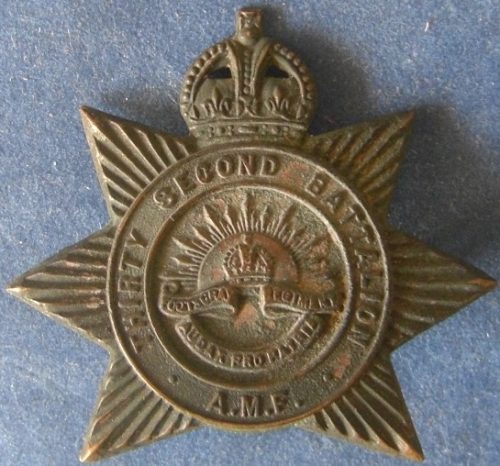Description
Description: 28th Battalion (The Swan Regiment) – Oxidised Hat Badge – 1930 to 1942
Maker’s Name: N/A
Condition: Very Good
Comments: 28th Battalion (The Swan Regiment) – Oxidised Hat Badge – 1930 to 1942. Complete with 2 lugs.
Guaranteed to be 100% genuine. Now scarce and highly desirable and worn only from around 1940 to 1942.
After the First World War the defence of the Australian mainland lay with the part time soldiers of the Citizens Military Force, otherwise known as the Militia. The Militia was organized to maintain the structure of the First AIF and kept the same numerical designations. These Militia units were also distributed in the same areas that had raised the original AIF units. Following this tradition east-Perth’s 28th Infantry Battalion was the “Swan Regiment”.
Like the other battalions in the Western Australia’s 13th Brigade, the 11th and 16th Battalions, the 28th had a long war primarily spent carrying out garrison duties. As part of the 4th Division, the 13th Brigade remained in Western Australia and during the second half of 1942 was III Corps’s main infantry force. III Corps was responsible for the state’s defence. In 1943 the 13th Brigade moved to the Northern Territory, where the 28th Battalion was based at 49 Mile Creek. The brigade’s commander, Brigadier Eric George Henderson McKenzie, held the longest brigade command of the war. McKenzie took over the brigade in June 1940 and relinquished command in May 1945 because of illness.
The long period of static garrison eventually ended when the 13th Brigade became part of the 5th Division and sailed to New Britain from the end of November 1944. The 28th Battalion reached Jacquinot Bay at the end of December. The brigade remained at Jacquinot Bay until the middle of April 1945, when it moved to relieve the 6th Brigade at Wide Bay.
Rather than carry out a major offensive against the Japanese on New Britain, the much smaller Australian force instead confined the Japanese to Rabaul and the Gazelle Peninsula with active patrolling. It had been the 6th Brigade that had established the line across the Gazelle Peninsula, by patrolling between Open and Wide Bays. The 13th Brigade was to hold this line and patrol forward from it but did not make any major move beyond it into Japanese-controlled territory.
Based at Waitavalo, from 12 April to the end of the war, the 28th sent out daily patrols into the surrounding jungle but had little contact with the Japanese.
After the war the 13th Brigade moved to Rabual, to assist in supervising the Japanese prisoners. In January 1946 the brigade returned to Australia and in March the 28th was disbanded.








